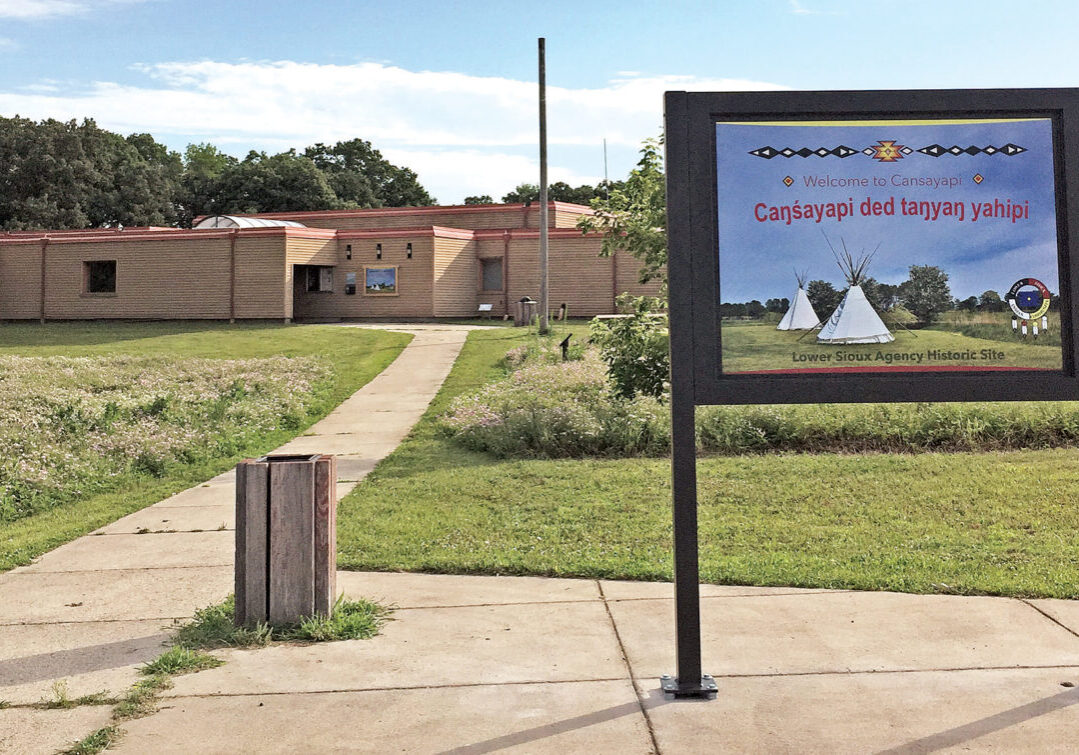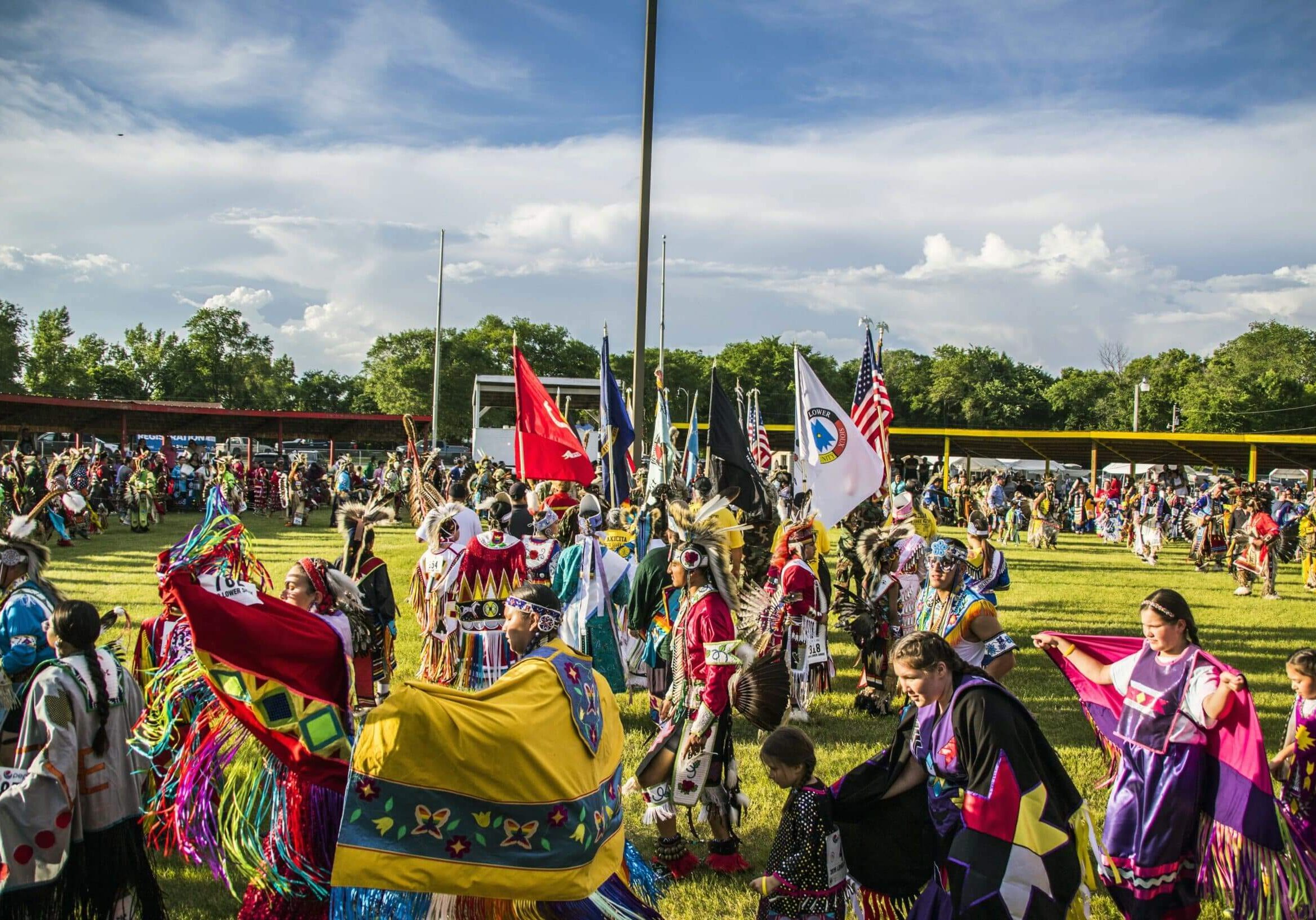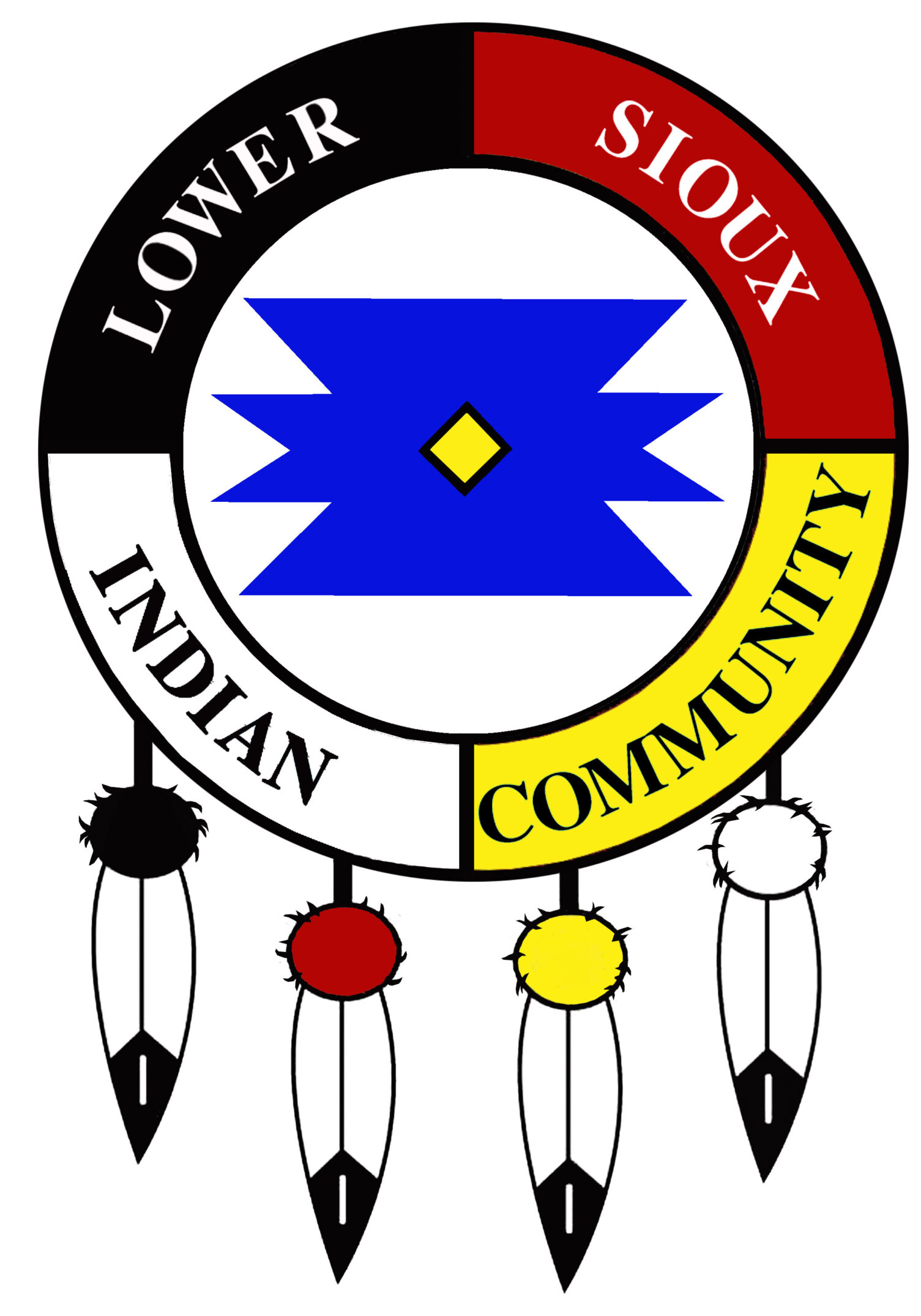The Bdewakantunwan Dakota (Sioux) is one of the seven bands of the Oceti Sakowin (Seven Council Fires). The Lower Sioux Indian Community, home of the Minnesota Bdewakantunwan band of Dakota, is located in south central Minnesota, bounded by Redwood County, and the Minnesota River.
Cansayapi: The Lower Sioux Indian Community
The Lower Sioux Indian Community, traditionally called Cansayapi (where they paint the trees red), offers a rare combination of scenic beauty and Minnesota heritage. The Lower Sioux Indian Community established a constitution and bylaws under the Indian Reorganization Act of 1934. This sovereign nation has a land base that consists of 1,759 acres held in trust status.
The land was never allotted to individual Bdewakantunwan Dakotas, but home sites were assigned to the tribal citizens. There are about 1,100 acres classified as agricultural land, grassland, and cultivated land, 570 acres of forest. However, due to the historical background of the Bdewakantunwan band of Dakota, the Lower Sioux Indian Community does place historical claim to other sites outside of its current land base in the State of Minnesota encompassing an area of over 24 million acres in the Minnesota River Valley alone.

Lower Sioux Agency Historic Site
Since 2007, the Lower Sioux Agency Historic Site has been managed by the Lower Sioux Indian Community in partnership with the Minnesota Historical Society. The Lower Sioux Agency was established in 1853 by the U.S. government to serve as administrative center for government efforts to remove the Bdewakantunwan and Wahpekute bands of Dakota to its reservation lands and to colonize them to become self-sufficient farmers.
The U.S. - Dakota War
This reservation was just four percent of the land the Dakota previously inhabited. As the United States drifted toward civil war, promises to the Dakota tribes were all but forgotten amidst the graft and corruption in the Indian service. Frustrated and provoked by a series of broken promises and by reservation policies that forced cultural change, Dakota warriors decided to go to war with the United States on a hot August Sunday in 1862. The fighting lasted six weeks and took the lives of nearly five hundred whites, mostly civilians, and an unknown but substantial number of Dakota.
Want to learn more?
To learn more about the U.S.-Dakota War, traditional and contemporary Dakota World views, or any Lower Sioux Agency Historic Site’s Cultural & Educational Program offerings, please contact 507-697-8674 or visit the Minnesota Historical Society website.


